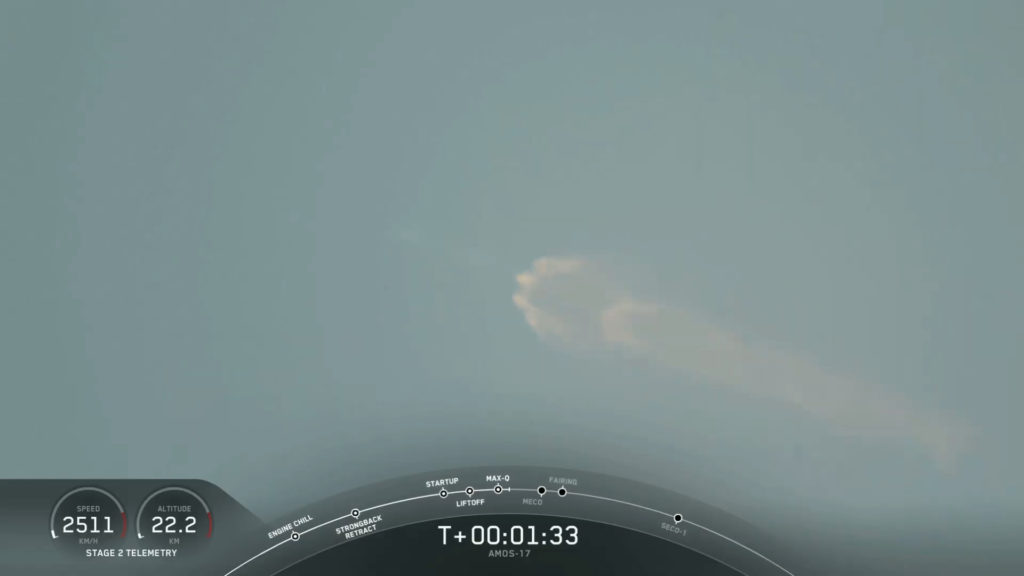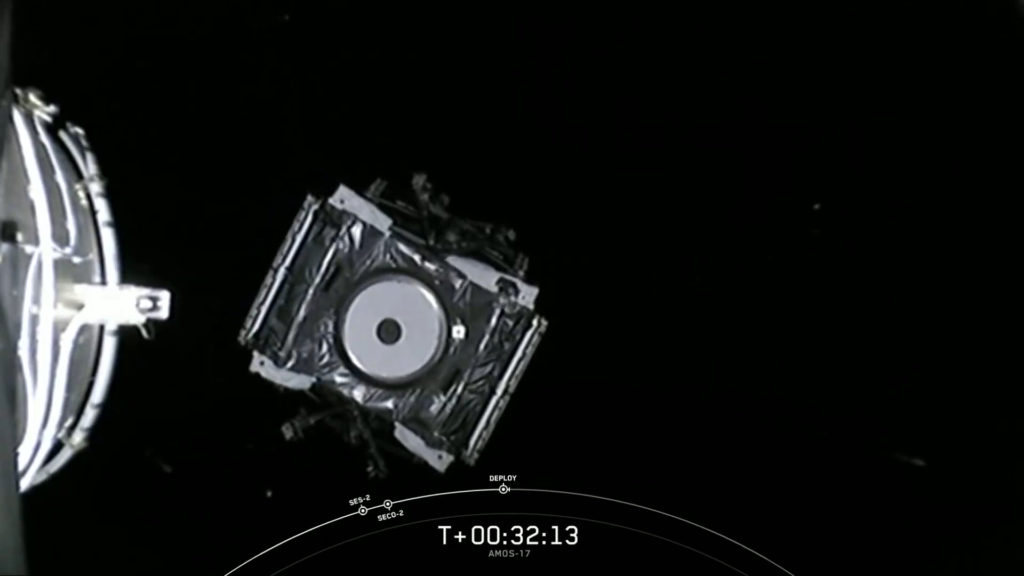
Flying into the haze 
Staging 
AMOS-17 release 
Falcon 9 launches from Cape Canaveral, 06 Aug 2019 2323 UT (Credit: SpaceX)
Falcon 9 delivered the AMOS-17 communications satellite to geostationary transfer orbit following a launch from Cape Canaveral, 06 Aug 2019 2323 UT.
AMOS-17 is operated by Israeli firm Spacecom and will operate at 17° East as a broadcast and broadband satellite serving African customers. The Boeing-built 5500 kg commsat features flexible routing between all of its transponders and spotbeams across the C, Ku, and Ka bands.
Today’s flight was originally scheduled for 2252 UT, but this slid to 2323 a few hours before launch. Just a few minutes before launch, continued marginal weather nearly delayed the launch again, though a last-second improvement allowed the launch to proceed.
The delivery fulfills a promise made by SpaceX to take Spacecom to orbit, following the loss of AMOS-6 during a ground test on 01 Sep 2016. Though the twice-used first stage was completely expended for this flight, a useful piece of flight hardware was still recovered; SpaceX recovery ship Ms. Tree, stationed nearly 1000 km downrange from Cape Canaveral, completed its mission to fetch at least one of the halves of the launch fairing.



